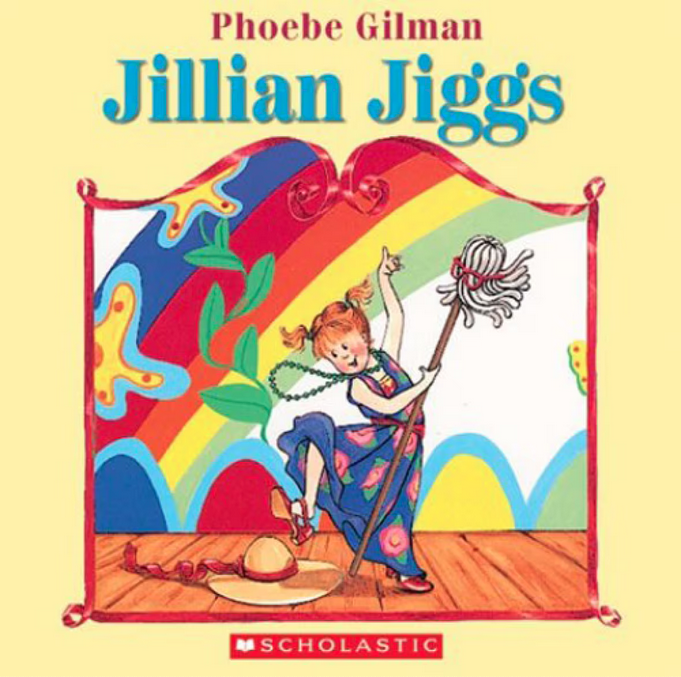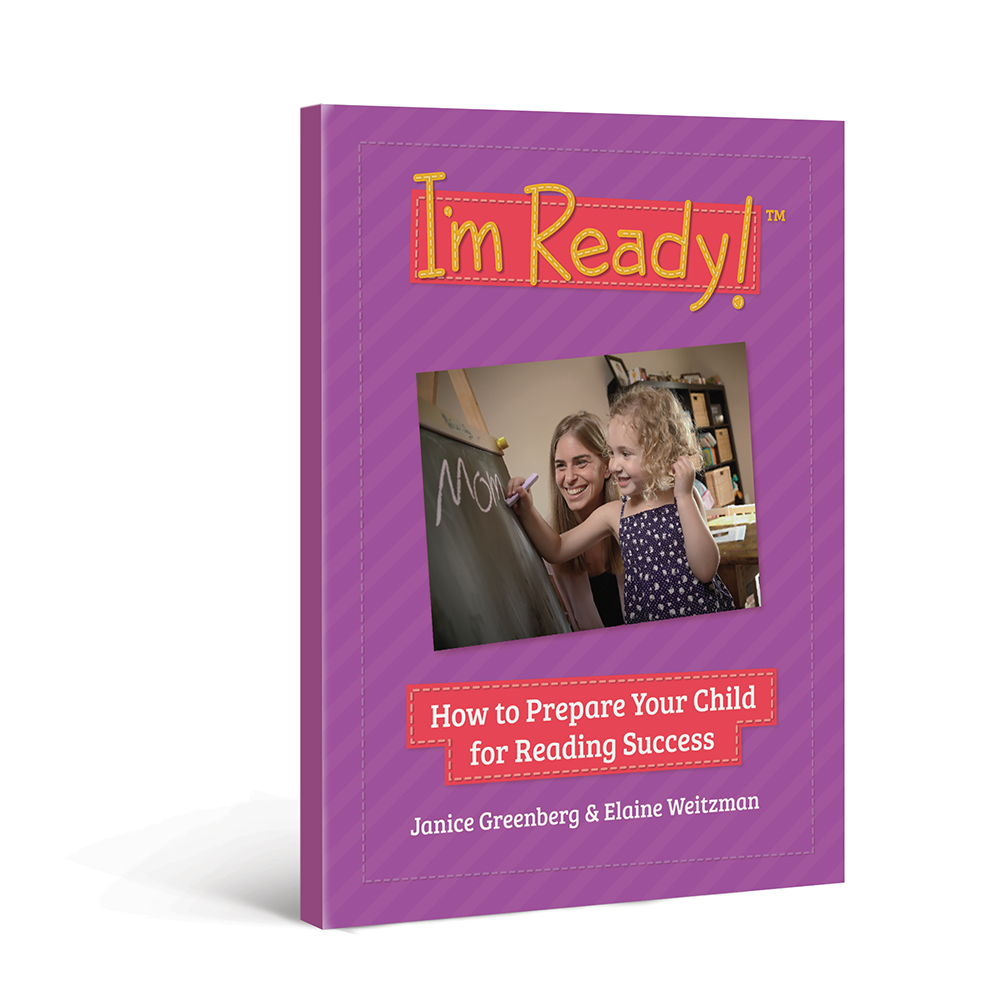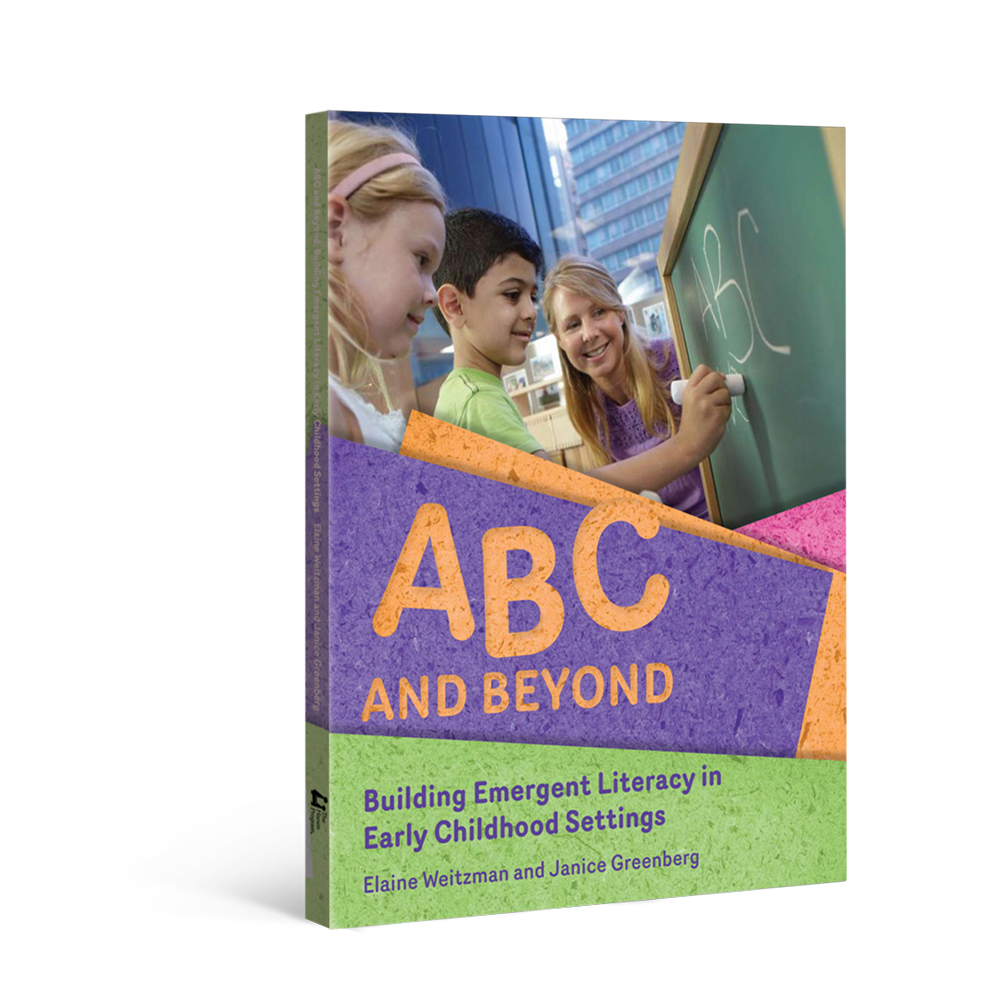This month's Book Nook topic is...
Building Sound Awareness with Jillian Jiggs

One of the critical early literacy skills a young child needs to learn to be prepared for reading writing is sound awareness.
Also known as “phonological awareness”, sound awareness means understanding that words can be broken down into syllables and syllables can be broken down into individual sounds. Having an awareness of these sounds prepares children for connecting the letters they see on a page with the sounds they represent, which is critical for making sense of print. After all, print is nothing more than symbols standing in for the sounds of language!
Rhyming books can be great tools for promoting sound awareness. In fact, one of the first signs that a child is developing sound awareness is when he starts to recognize rhymes in books or songs. At The Hanen Centre, we use a strategy called “Listen… and Find One Like It” to help children pay attention or “tune in” to words that start (alliteration) or end (rhyme) with the same sound.
Let’s look at some ways you can apply this strategy with a fun rhyming book.
The Book:
Jillian Jiggs by Phoebe Gilman
Why we chose it
This is a funny book (and a classic in many households!) about a little girl who gets too distracted to clean up her room. The entire book is written in rhyme so it’s a great option for focussing on sound awareness.
The strategy – Listen… and Find One Like It
This strategy works exactly how it sounds.
Step 1 – Listen
When reading (or singing) with your child, draw his attention to rhyming words by pointing them out after you’ve completed a rhyming section and stressing the rhyming words as you say them. If you’re reading Jillian Jiggs, you could say: “Listen, ‘Jiggs’ and ‘pigs’ rhyme – they sound the same at the end. Listen. ‘Jiggs’. ‘Pigs’.”
Step 2 – Find One Like It
Now it’s time to encourage your child to find another rhyming word. You could say: “Let’s think of another word that sounds like ‘Jiggs’ and ‘pigs’. How about ‘twigs’?‘Twigs’ sounds like ‘Jiggs’ and ‘pigs’. ‘Twigs,’ ‘Jiggs’ and ‘pigs’ all rhyme. They all sound the same at the end of the word.”
Many young children won’t yet be able to produce a rhyme, and that’s fine! Exposing them to the idea of rhyming words will build their sound awareness. Offer many of your own examples of rhyming words before expecting them to come up with their own the first time you introduce the “Listen… and find one like it” game.
The first time you read the book
During the first read, you don’t want to interrupt the book too much because your child is just getting familiar with the story. But something simple you can do that won’t interfere with the flow of the reading is to emphasize the rhyming words as you say them (the rhyming words in this book are at the end of each line).
For example, on the first page of Jillian Jiggs you could say:
“For Jillian Jiggs liked to dress up and play,
And this made a mess in her room every day.”
As you read, you can also pause before the second rhyming word (“day” in this example) to see if your child wants to try to fill in the missing word.
The second time you read the book
Now that you’ve been through the book once, you can pause to have a little conversation about the rhyming words. You can read a page, and then say “Listen. ‘play’ sounds like ‘day’. ‘Play’ and ‘day’ rhyme. Do you hear how they sound the same at the end of the word? ‘Play’. ‘Day’.”
Then you can say: “Now let’s think of another word that rhymes with ‘play’ and ‘day’. Hmm. How about ‘hay’? ‘Hay’ sounds like ‘play’ and ‘day’, doesn’t it? ‘Hay,’ ‘play,’ and ‘day’ all rhyme. They all sound the same at the end of the word.” Children often enjoy this little game, so you can probably do it on every page!
The third time you read the book
In this reading, you can point out other rhymes you might have missed during the second reading. For example, in Jillian Jiggs, the words ‘through’ and ‘new’ are rhymed many times. Point out that rhyme in exactly the same way as you did for ‘play’ and ‘day’ and see what rhyming words your child can come up with.
Since your child has now heard many rhyme examples, for the “find one like it” part of the strategy, you can ask him or her to come up with a word. You can say, “Can you think of another word that rhymes with ‘through’ and ‘new’?” Then wait quietly for a few seconds to see if they attempt to fill in a word. If you wait for five to ten seconds and your child doesn’t respond, you can then go ahead and help him by offering an example: “What about ‘shoe’?”. “’Through,’ ‘new’, and ‘shoe’ all sound the same at the end – they all rhyme.”
This strategy can be a lot of fun and gets really silly quickly as children often start making up nonsense words when they can’t think of a real word that rhymes. After a while, try to get your child to find rhymes in other books you read together or in songs or nursery rhymes he likes.
Keep it going!
Rhymes are a great place to start, but they’re not the only place you can point out similar sounds. Once your child is good at finding words that end with the same sound (e.g. ‘later’ and ‘straighter’), try pointing out words that start with the same sound. For example, you could say, “Look, ‘sat’ and ‘soar’ sound the same at the beginning. They both start with the /s/ sound. Remember to say the sound the letter makes (‘sss’), instead of saying “the S sound”.
Once you’ve pointed out a few words that start with the same sound, continue to the second part of the strategy and “find one like it”, just as you did with the rhyming words.
Happy sound awareness building!
More Resources
The strategies in this Book Nook post are drawn from Hanen’s practical, research-based guidebooks for building emergent literacy. Explore the links below to learn more about how these guidebooks can support you.
For Parents I'm Ready! guidebook
I'm Ready! guidebook
For Educators ABC and Beyond guidebook
ABC and Beyond guidebook
